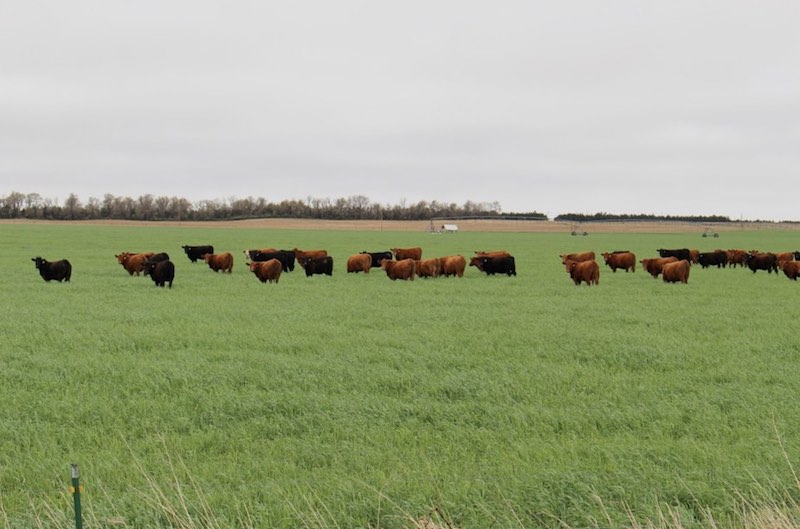Growing and Grazing Annual Forages
March 2017

Over the last few years, an increasing number of producers have become interested in planting and grazing annual forages on dryland or irrigated crop acres.
Several annual forages will work well for this use and growers should choose those that best meet their needs, particularly, the time when their livestock would graze these forages. For some, this might be spring before native or warm-season pasture is grazed. For others, it might be mid and late summer, or in some cases, there may be a need for fall pasture.
Winter annuals planted the previous fall, like wheat, rye, or triticale, can provide some of the earliest spring grazing. Popular cool-season annuals planted in early spring include small grains such as oats, spring triticale, or barley. Commonly planted warm-season or summer annuals include sudangrass, sorghum-sudangrass hybrids, and pearl and foxtail millet.
Mixtures of two or more species can be an option as well. Field peas, for example, are very compatible with any of the spring-planted small grains. More complex mixtures that contain several species, including both cool- and warm-season grasses, brassicas, and other broadleaf species, are also an option. On irrigated acres, using various double-cropping combinations can further increase overall forage production and grazing potential.
To make the most effective use of annual forages, it is important that grazing be managed carefully. Subdividing the field into several paddocks and rotating livestock through these paddocks can increase harvest efficiency. It’s also important to start grazing at the appropriate stage of plant growth or height. With many annual forages, high nitrates or prussic acid could pose a risk to animal health. Other grazing options for annual forages could include stockpiling the forage for late fall or winter grazing. This can be done by either leaving the forage stand or windrow grazing it.
Two recent webinars, “Growing Annual Forages” and “Grazing Annual Forages,” contain additional information on agronomic considerations and grazing management. An article, “Planning Annual Forage Systems,” also provides information.
Reference
Jerry Volesky, Extension Range and Forage Systems Specialist
West Central Research & Extension Center
University of Nebraska–Lincoln
back to Beef Forage Crops Systems